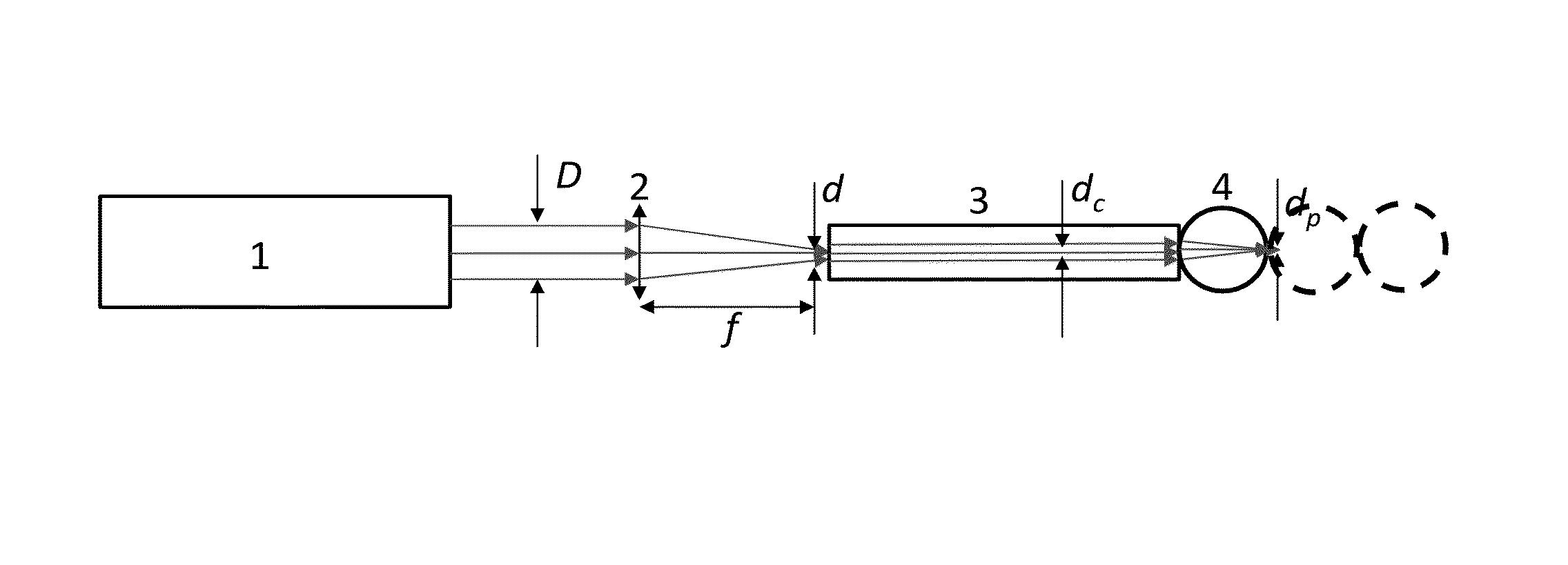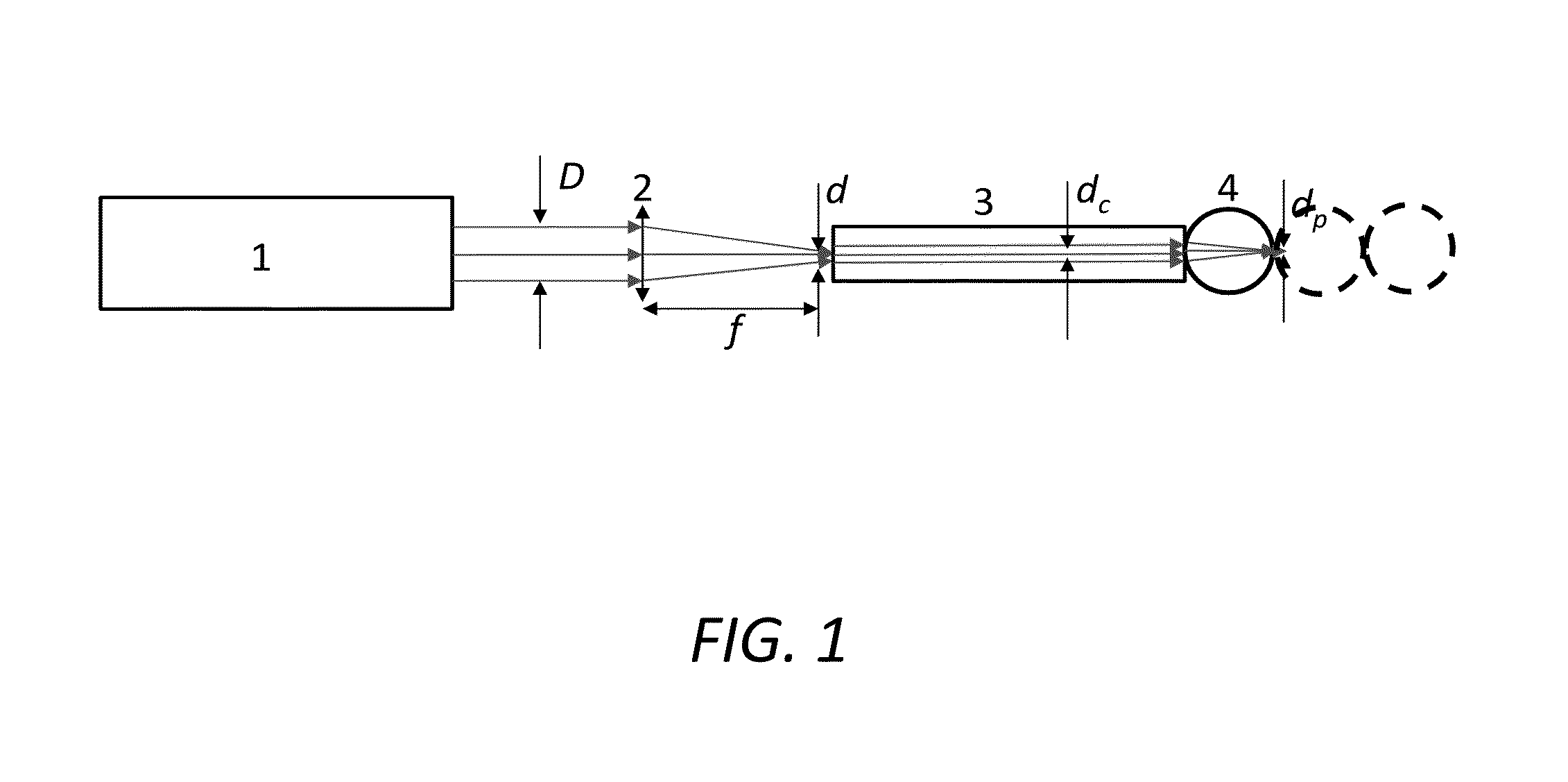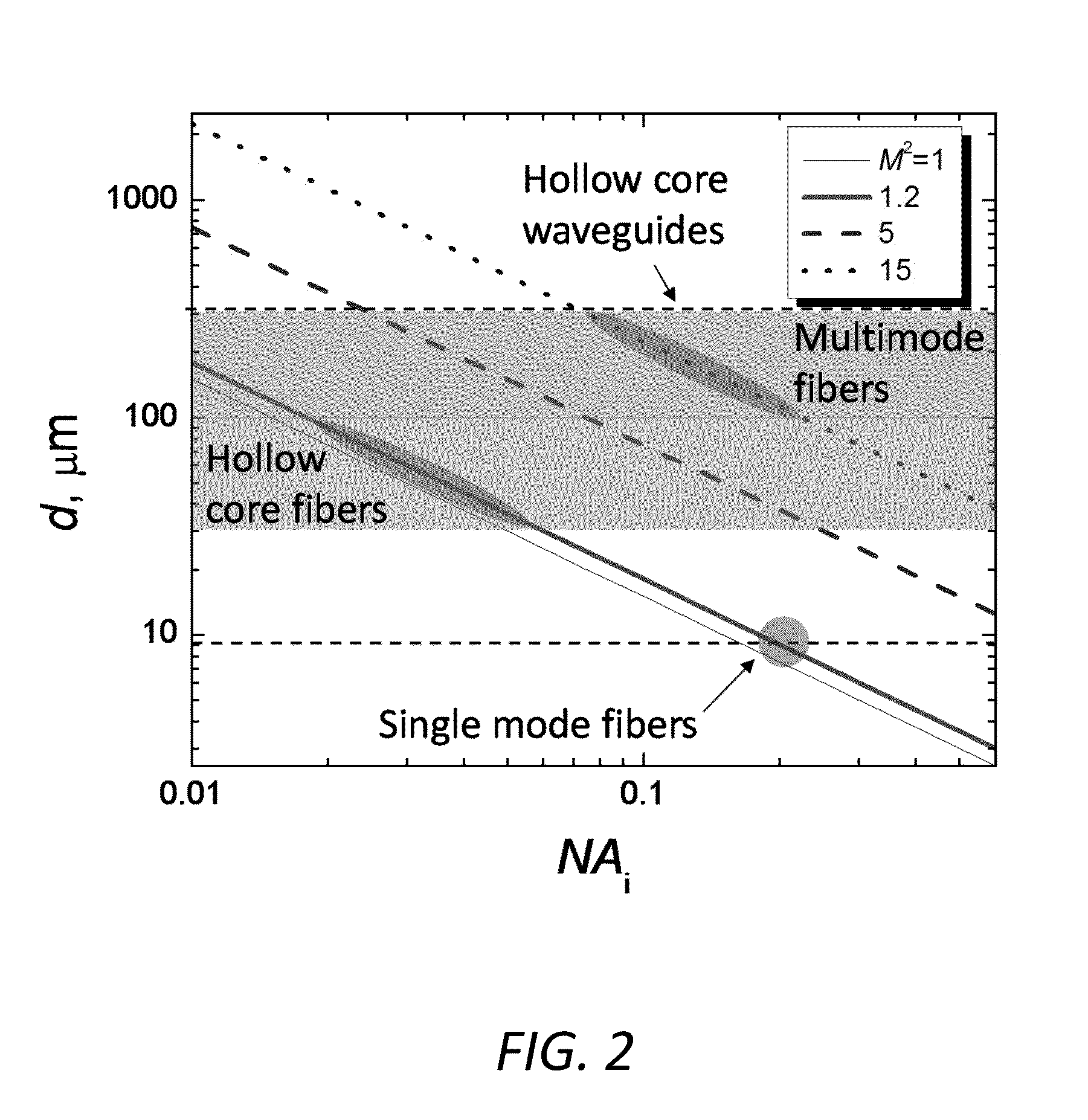Contact focusing hollow-core fiber microprobes
a hollow-core fiber and micro-probe technology, applied in the field of optics and medical fields, can solve the problems of reduced optical beam quality, increased optical loss, and limited number, and achieve the effect of high optical throughput and flexible and efficient delivery
- Summary
- Abstract
- Description
- Claims
- Application Information
AI Technical Summary
Benefits of technology
Problems solved by technology
Method used
Image
Examples
Embodiment Construction
[0018]Referring now specifically to FIG. 1, in one exemplary embodiment, the focusing microprobe of the present invention includes a laser radiation source (1), a focusing lens (2), a flexible optical delivery system (3), and one or more microlenses (4) assembled as a focusing tip. For efficient coupling of the source to the delivery system, two main conditions must be satisfied. First, the diameter, d, of the focused laser beam at the edge of the delivery system (either fiber or waveguide) must be smaller than the diameter of the core, dc, of the delivery system. The focused beam diameter can be approximated by the formula:
d=M2λ / (2NAi),
where M2 is a laser beam quality number indicating how close the laser beam is to being a single-mode beam and NAi=nsinθi≈nD(2f) is the numerical aperture of the incident laser beam, n is the index of the medium (n=1 in air), θi is the angle of incidence, D is the diameter of the laser beam, and f is the focal distance of the lens. The second conditi...
PUM
 Login to View More
Login to View More Abstract
Description
Claims
Application Information
 Login to View More
Login to View More - R&D
- Intellectual Property
- Life Sciences
- Materials
- Tech Scout
- Unparalleled Data Quality
- Higher Quality Content
- 60% Fewer Hallucinations
Browse by: Latest US Patents, China's latest patents, Technical Efficacy Thesaurus, Application Domain, Technology Topic, Popular Technical Reports.
© 2025 PatSnap. All rights reserved.Legal|Privacy policy|Modern Slavery Act Transparency Statement|Sitemap|About US| Contact US: help@patsnap.com



